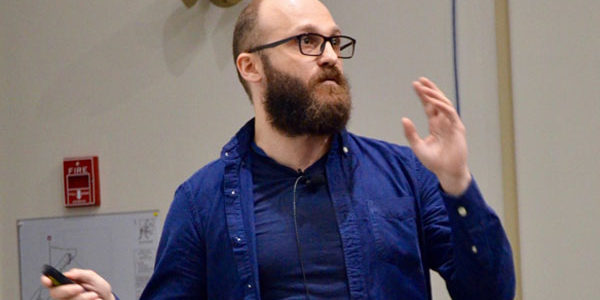NEWPORT NEWS, VA – In the world of computing, there’s a groundswell of excitement for what is perceived as the impending revolution in artificial intelligence. Like the industrial revolution in the 19th century and the digital revolution in the 20th, the AI revolution is expected to change the way we live and work. Now, Cristiano Fanelli aims to bring the AI revolution to nuclear physics.
Fanelli, who is currently a postdoctoral researcher at the Massachusetts Institute of Technology, is the winner of the 2018 Jefferson Science Associates Postdoctoral Prize for his project to use artificial intelligence to optimize systems for nuclear physics research being carried out at the U.S. Department of Energy’s Thomas Jefferson National Accelerator Facility.
“It’s an exciting time to do nuclear and particle physics research with the artificial intelligence revolution happening now.”
—Cristiano Fanelli
Since 2015, Fanelli has been working on GlueX, an experiment that is being carried out as part of the 12 GeV upgrade to Jefferson Lab’s Continuous Electron Beam Accelerator Facility (CEBAF). Scientists in the GlueX collaboration aim to produce and study so-called exotic hybrid mesons. These particles are built of the same stuff as ordinary protons and neutrons: quarks bound together by the “glue” of the strong force. But the glue in these mesons behaves differently and may provide a window into how subatomic particles are built.
The GlueX collaboration is adding a new system to its existing equipment called DIRC, which stands for Detection of Internally Reflected Cherenkov light. The new system will help identify particles that are produced in experiments, such as protons, pions and kaons. This capability will allow researchers to infer the quark flavor content of exotic hybrid and conventional mesons produced in experiments.
The DIRC consists of a complex design of many components that must be aligned precisely for accurate particle identification. Fanelli is working on implementing Bayesian optimization to allow researchers to use computers to more quickly and accurately predict the optimum alignment for the components of the DIRC system.
Read the full story at JLAB.
